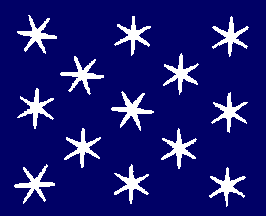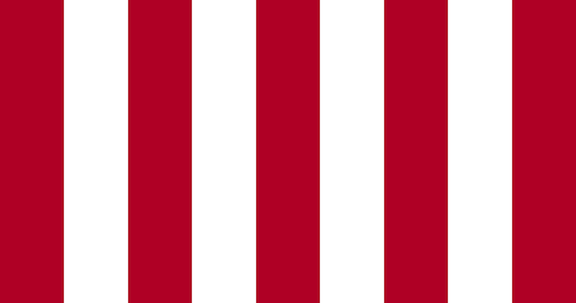
The Sons of Liberty Alternating Nine Red & White Stripe Flag
was a Rally-Cry Symbol for the Repeal of the Stamp Act in 1765
*************
The Sons of Liberty’s 9 Stripe Flag
The Sons of Liberty were masters of their era in using historical symbols such as, the Liberty Cap & Pole, the Rattlesnake, and the 9 than 13 red and white stripe flag. They used these symbols by transforming them into a contemporary propaganda mechanism of the era to rally American colonists to the Patriot’s Cause. Originally, the Sons of Liberty adopted a 9 red and white alternating stripe flag, but when the revolution broke out it changed to 13 to represent and unite the colonists to their cause.
Originally the red and white stripes came from two rival branches of the Royal House of Plantagent. This would be the House of Lancaster which is associated with the Red Rose, and the House of York which is associated with the White Rose. Since the American colonists derived from white anglo-salon English and German decent they were familiar with the flag and its colors. In this era, money didn’t ensure social class status. Class stratification was a struggle on many levels. The newly landed gentry wanted to become British citizens for the elevation of social status, and given the respect above the commoners. So the Sons of Liberty gentry members must of understood this and adopted the red and white flag as a way of beating class stratification. The American gentry who were not eligible for British citizenship knew that after the war ended England would still be a dominating economic force for the colonies prosperity. Originally and probably up until 1778/9 they believed that if they won post war politics would make Parliamentary allowances in its citizenship, and make allowances for the newly landed gentry who were suffering from laws of inequality because of class stratification.
If we look back in time and take an 18th century view, this was still considered a “Scots War” on both sides of the Atlantic. In America the Scottish Gentry controlled most of the shipping trade in arboriculture and agriculture through Chesapeake Bay Company. In Scotland and England social clubs with influential political gentry were secret Jacobite sympathizers who constantly worked against the King. Influential Jacobite Propaganda mechanisms such as, newspapers, and journal articles were giving social direction for Jacobite sympathy. This was supported by easy ancient Egyptian & Roman culture symbols that were universally understood. The Liberty Cap & Pole, and the Snake of Charles the I & II were re-used from earlier Jacobite uprisings. Prince Edward Stuart in 1745/6 used these symbols in a printed propaganda campaign against the English Crown. He geared his propaganda campaign in hopes of Scottish Clan leaders support and European nobility alliances for the Restoration of the House of Stuart. Going from European palace to palace gaining support while promising Clan leaders equal rights and liberties under a Stuart controlled British throne.
The 13 Stripes in the American Flag has several meanings which is like a multi-layer allusion which talks to several audiences. The first is a religious representation of Jesus and his 12 apostles. The second would be more contemporary to the era and would be the King of England and his 12 Sir Knights of the Order of the Garter. The third is a little more tricker, but more relevant if your a Jacobite fighting the new war of independence in 1775. The 13 Stripes was to signify the Restitution of Prince Edward Stuart to the British throne and replacing the power structure of the Hanoverian Order of the Garter Knights who came into political power during George I reign. This would include the Restoration of Clan leaders powers within Scotland which were stripped away since the dethronement of James VII & II in 1698.
The Order of the Garter was established with underlying codes of conduct which gave creation to the “Sir” title to knighthood. The premises is that their is a higher morality of chivalry toward our fellow man. A respectability and kindness which should be offered freely, it should be seen as mans common decency and compassionate nature from one person to another. When a knight was considered chivalrous, it was understood that he wielded the power to crush others by his social standing, but would not and act compassionately instead. In medieval times these Sir Knights often acted as law enforcement within their lands, and acted as sort of judges over people’s infractions. So, a sir knight who acted with higher morality was usually noted when a transgression of social law contracts was breeched. They would compassionately weigh the transgression and act in understanding (mercy) instead of strict enforcement. This was looked at as a purer understanding of mankind limitations and weakness, and then being able to overcome our own lustful desires to become richer or more powerful over the weak, less fortunate, and uneducated.
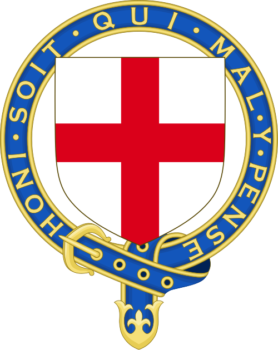
King Edward III Most Noble Order of the Garter
The enlightened idealist in Scotland’s Universities, Jacobite social clubs in England, and in the British Colonies coffee houses, taverns, and Masonic Lodges were able to harness and incorporate the exemplified nature of man’s common decency and civility. With a transformational process chivalry and codes of the Order of the Garter and Thistle they were able to embody it’s core virtuous message and transform it into equal rights for all men in a Revolution. Thomas Jefferson was said to have been able to capture the era’s social and political environment within society.
As God is probably is the true origin of mans creation which is taught through the different world’s religions, this chivalrous idea of an Enlightened society based on New Ideals was most likely taken from Edward III’s Most Noble Order of the Garter (1348) and Scotland’s King James VII’s modern version of the Knights Companion Most Noble Order of the Thistle in 1687; and not religion. To the Enlightened Revolutionaries who understood the red & white stripes of the new revolutionary flag their interpretation would have an underlying meaning of a code of higher moral conduct. This would as a layer in an allusion in the Patriots Cause; as well as being a foundational cornerstone of the Grand Architects Design for a new societal construct. The embodiment of man’s goodness toward one another and acting hand-in-hand for the betterment of the society as a whole. The Enlightened Revolutionaries cornerstone idea of chivalry should be viewed as laying the seedlings for our future republic with an underlying principle of man’s virtue for goodness amongst one another in political and social differences. Hence, this is the underlying foundation to the real subcutaneous meaning, “Don’t Tread Upon Me.”
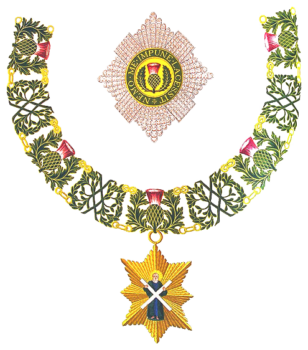 Insignia of a Knight Companion of The Most Ancient and Most Noble Order of the Thistle
Insignia of a Knight Companion of The Most Ancient and Most Noble Order of the Thistle
As we use the words, “God Bless” for our actions and misconceptions towards one another, we as a species are continually tested in our daily charitable actions of forgiveness towards one another’s weaknesses. By the Enlightened Revolutionaries using these morality foundations of chivalry, it provides a path for our post-revolutionary country to move forward as a nation toward self enlightenment and generosity towards one another. The New Era’s Ideals presented in the Great Architects Design in the post-revolutionary times gives our society a pathway forward without the fear of societal destruction, as other European civilizations have succumbed to in past history.
We The People as a New Republic no longer need the Rattlesnake to devour it’s own tail by mankind’s own natural evil instincts and devices. We can now unite (E. Pluribus Unum) as one and face our own enemies within ourselves and without and have the foresight to be cutely aware. When Tread upon, we can give the warning of the Rattlesnake’s fork tongue hiss in the observation of mankind’s natural lineage of paterfamilias hereditary evil. This enlightenment is for all people of the world; as I write this meanings not as a high society educated religious person, but as a common citizen who understands the nature of God’s simplistic message is for all men regardless of their stature.
As we peel away each layer of the multi-meaning illusion, we see the 13 stripes has many representative historical meanings which are all interwoven together to make the fabric we perceive for our own reality. For the patriots of 1775/1776 the 13 stripes symbolized an elementary meaning that each stripe reflected each one of the known 13 colonies. This fundamentally provided unity for all colonists of different colonies.
Rob’s Last Thoughts on 13 Stripes: To understand the intended meaning and usage by the 18th century Enlightened Visionaries we have to look at earlier significances in it’s use which derive the meaning of the symbol’s composition from it’s origin’s use. Some rudimentary significances such as, the early Anglo-Norman Maxim which was later adopted by the British Order’s as their emblem, Hon* Soit * Qui * Mal * Pence literally means, “Shame on him who thinks ill (Badly) of it.” Through the “Order of the Thistle,” the Scottish culture was able to harness the Celtic’s character attributes of bravery, devotion, durability, strength, and determination. Is this not what the American flag stands for even in today’s contemporary time? All these subcutaneous illusions provided by our revolutionaries are well thought out high-minded principled ethical undercurrent meanings too help provide a more virtuous foundation to a revolutionary cause through the symbolic 13 stripes within our flag.
The Blue Field for George Washington’s Standard and American Flag
*************
Bonnie Prince Charlie Entering the Ballroom at Holyroodhouse
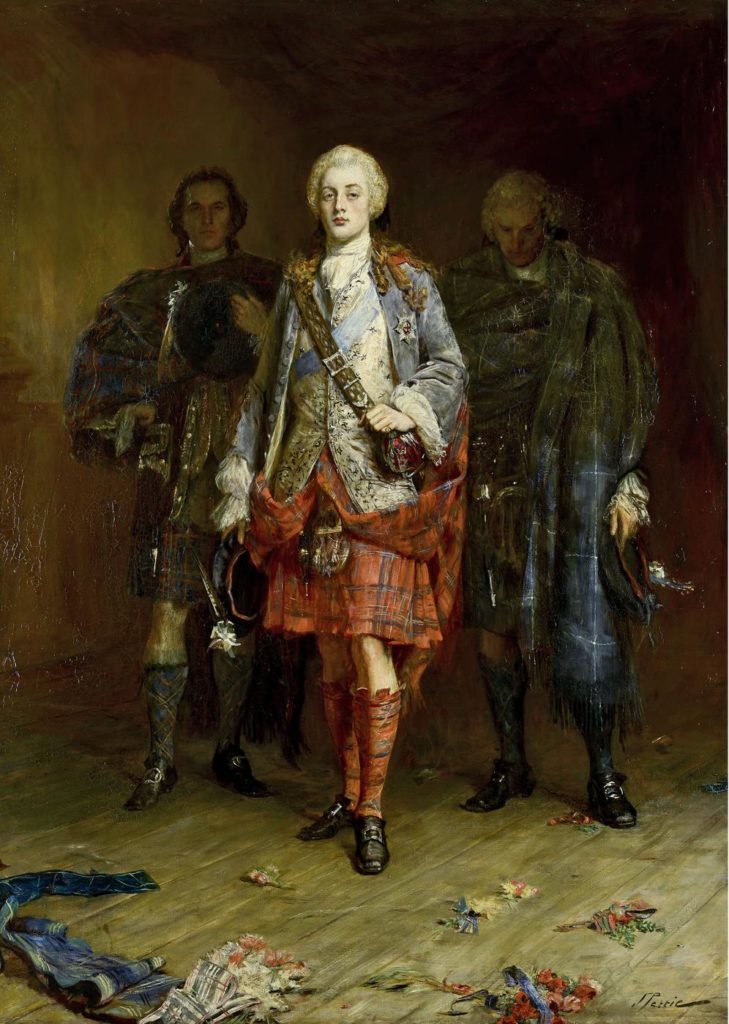 by John Pettie, National Museums Scotland
by John Pettie, National Museums Scotland
One should first know that the painting above was made 1892, a little more then a 100 years after the death of Prince Edward Stuart. This portrait was a sort of a romantic imagery. A young dashing Prince who would be the future King of Scotland, England, and Ireland along with two strapping Highlanders of Clan nobility at his side. Well, this most likely didn’t happen, but artist did mix in some visual truth to give his paintings some historical accuracy. So, let us look at some depicted facts in this wonderful painting. We know the Stuart family was able to keep their dream of Devine Right of Kings alive after the dethronement of James VII & II in 1698. They would repeatedly send out images from various palaces in Europe of themselves to inspire loyalists to resist the Hanoverian political rule to increase their economic benefit. In essence, this was a focused media propaganda campaign to promote themselves as the rightful heirs, and this could be accomplished only by a ground swell of public support by the nobles. Starting with James Francis Edward Stuart who would become known as, The Old Pretender” or later continued by his son Charles Edward Stuart known as, “The Young Pretender.” In the three kingdoms they cleverly crafted their “Resistance and Restoration Campaign” to address gentry audiences who would benefit politically under their rule if they were to rightfully regain the throne of England, Scotland, Ireland, and of course later the British Colonies in America. This would be done by depicting either one of the Stuart Princes in a formal European Court setting. Depending on who they were gearing the imagery towards they would use the noted tapestries associated with being King. So, to be noted as King of England, he would wear a Royal Blue Coat or Red Coat with a Blue Sash with the Order of the Garter’s eight pointed star prominently over his left breast. This should be considered purposefully placed propaganda geared to Jacobite sympathizers living in England. To appeal to Scottish Clan leaders, the Stuart Princes would be depicted (usually in the Palace of Holyrood) wearing a full Highland Dress with a Royal Blue Sash along with the Order of the Thistle prominently displayed.
Prince Edward Stuart in a full highland Dress W/ Order of the Thistle

Painted by William Mosman around 1750
***
Since support had to come from a wide variety of Gentry audiences outside the three kingdoms in other sympathetic European nations like France and Italy, his campaign would have to cater to each with different rebellious motifs of Restitution ambition. In the painting below we see a young 19 year old Prince Charles Edward Stuart as a confident warrior wearing a military breast plate and shoulder Armor. Ceremonial adorned by his stature and rank by having lavish tapestries of furs associated with Royalty. The commonality of the House of Stuart Stuart Princes always had an elegant “Blue Sash”, which were associated with both Orders of the Garter and Thistle.
Prince Edward Stuart embodies the Hopes of the Stuart Cause
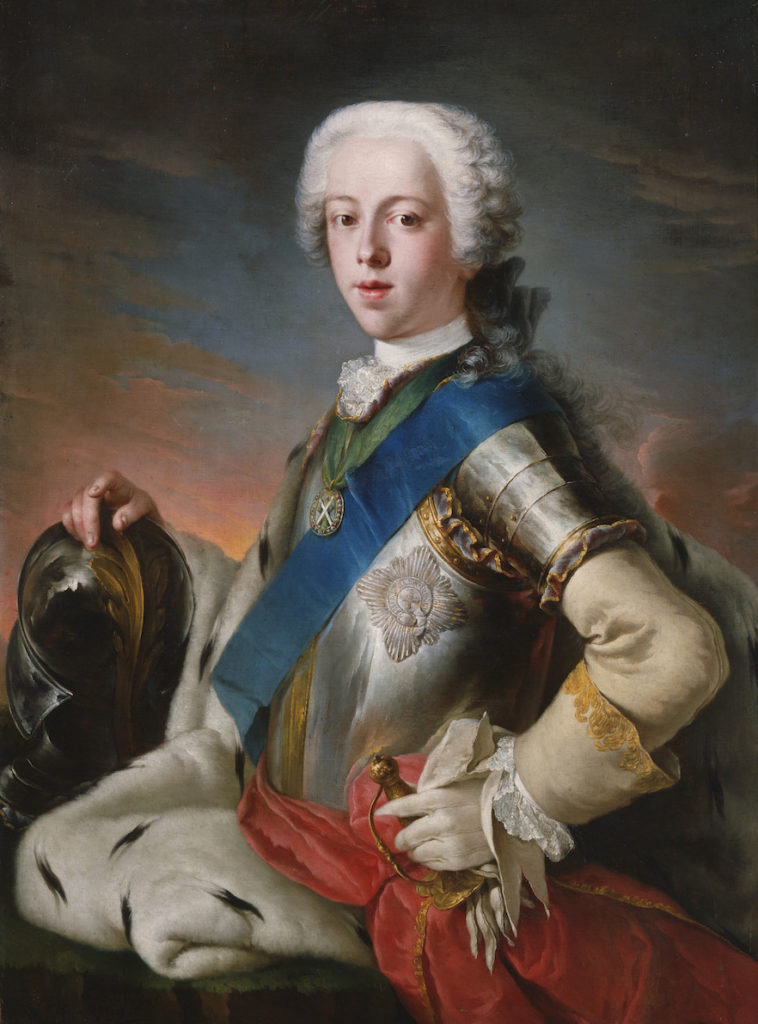 Louis-Gabriel Blanchet 1739, Rome Italy, Commissioned in Rome by William Hay
Louis-Gabriel Blanchet 1739, Rome Italy, Commissioned in Rome by William Hay
End Draft 10-11-18
